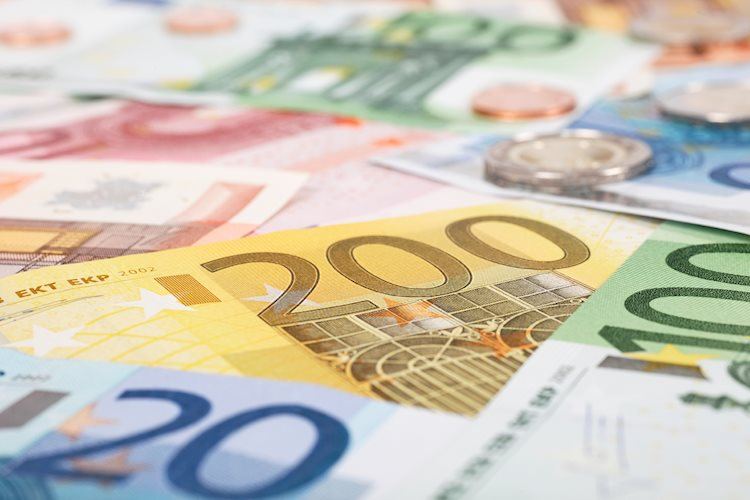- EUR/USD edges higher to around 1.0855 in Thursday’s early Asian session.
- Private sector employment increased by 233,000 jobs in October.
- The Eurozone HICP and the US PCE inflation data will be in the spotlight on Thursday.
The EUR/USD pair attracts some buyers to near 1.0855 during the early Asian session on Thursday. The weakening of the US Dollar (USD) and the better-than-expected Eurozone flash Gross Domestic Product (GDP) for the third quarter provides some support to the major pair.
The US economy grew at an annualised rate of 2.8% in the third quarter (Q3), slightly lower than the 3% estimated by economists. Meanwhile, private sector employment rose by 233,000 jobs in October, compared to September’s reading of 159,000 (revised from 143,000), according to the October ADP National Employment Report.
The US Dollar index (DXY), which measures the USD against six major rivals, retreats to weekly lows of 104.09 after reaching the highest since July 30 at 104.63 on Tuesday. Uto Shinohara, senior investment strategist at Mesirow Currency Management in Chicago, said the markets expect a 25 basis points (bps) cut in the November meeting, but another cut in December remains a coin flip.
The Eurozone economy expanded 0.4% QoQ in the third quarter of 2024, according to Eurostat’s preliminary estimates, stronger than the 0.2% expected. On an annual basis, Eurozone GDP grew by 0.9% in Q3, above the market consensus of 0.8%.
Investors will keep an eye on the Eurozone Harmonized Index of Consumer Prices (HICP) and the US Personal Consumption Expenditures (PCE) – Price Index data, which are due later on Thursday.
Euro FAQs
The Euro is the currency for the 19 European Union countries that belong to the Eurozone. It is the second most heavily traded currency in the world behind the US Dollar. In 2022, it accounted for 31% of all foreign exchange transactions, with an average daily turnover of over $2.2 trillion a day. EUR/USD is the most heavily traded currency pair in the world, accounting for an estimated 30% off all transactions, followed by EUR/JPY (4%), EUR/GBP (3%) and EUR/AUD (2%).
The European Central Bank (ECB) in Frankfurt, Germany, is the reserve bank for the Eurozone. The ECB sets interest rates and manages monetary policy. The ECB’s primary mandate is to maintain price stability, which means either controlling inflation or stimulating growth. Its primary tool is the raising or lowering of interest rates. Relatively high interest rates – or the expectation of higher rates – will usually benefit the Euro and vice versa. The ECB Governing Council makes monetary policy decisions at meetings held eight times a year. Decisions are made by heads of the Eurozone national banks and six permanent members, including the President of the ECB, Christine Lagarde.
Eurozone inflation data, measured by the Harmonized Index of Consumer Prices (HICP), is an important econometric for the Euro. If inflation rises more than expected, especially if above the ECB’s 2% target, it obliges the ECB to raise interest rates to bring it back under control. Relatively high interest rates compared to its counterparts will usually benefit the Euro, as it makes the region more attractive as a place for global investors to park their money.
Data releases gauge the health of the economy and can impact on the Euro. Indicators such as GDP, Manufacturing and Services PMIs, employment, and consumer sentiment surveys can all influence the direction of the single currency. A strong economy is good for the Euro. Not only does it attract more foreign investment but it may encourage the ECB to put up interest rates, which will directly strengthen the Euro. Otherwise, if economic data is weak, the Euro is likely to fall. Economic data for the four largest economies in the euro area (Germany, France, Italy and Spain) are especially significant, as they account for 75% of the Eurozone’s economy.
Another significant data release for the Euro is the Trade Balance. This indicator measures the difference between what a country earns from its exports and what it spends on imports over a given period. If a country produces highly sought after exports then its currency will gain in value purely from the extra demand created from foreign buyers seeking to purchase these goods. Therefore, a positive net Trade Balance strengthens a currency and vice versa for a negative balance.
